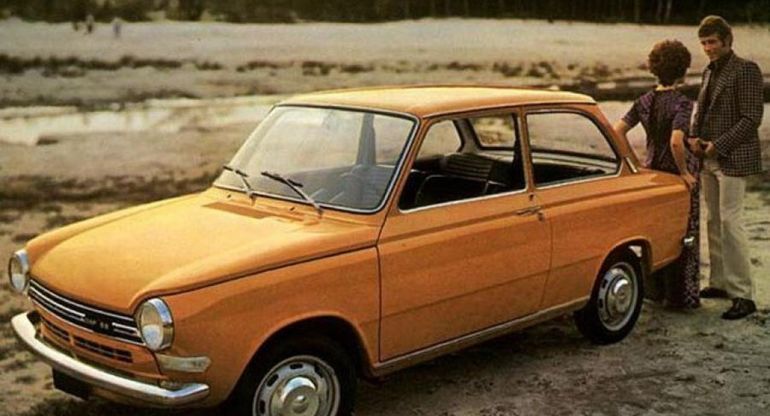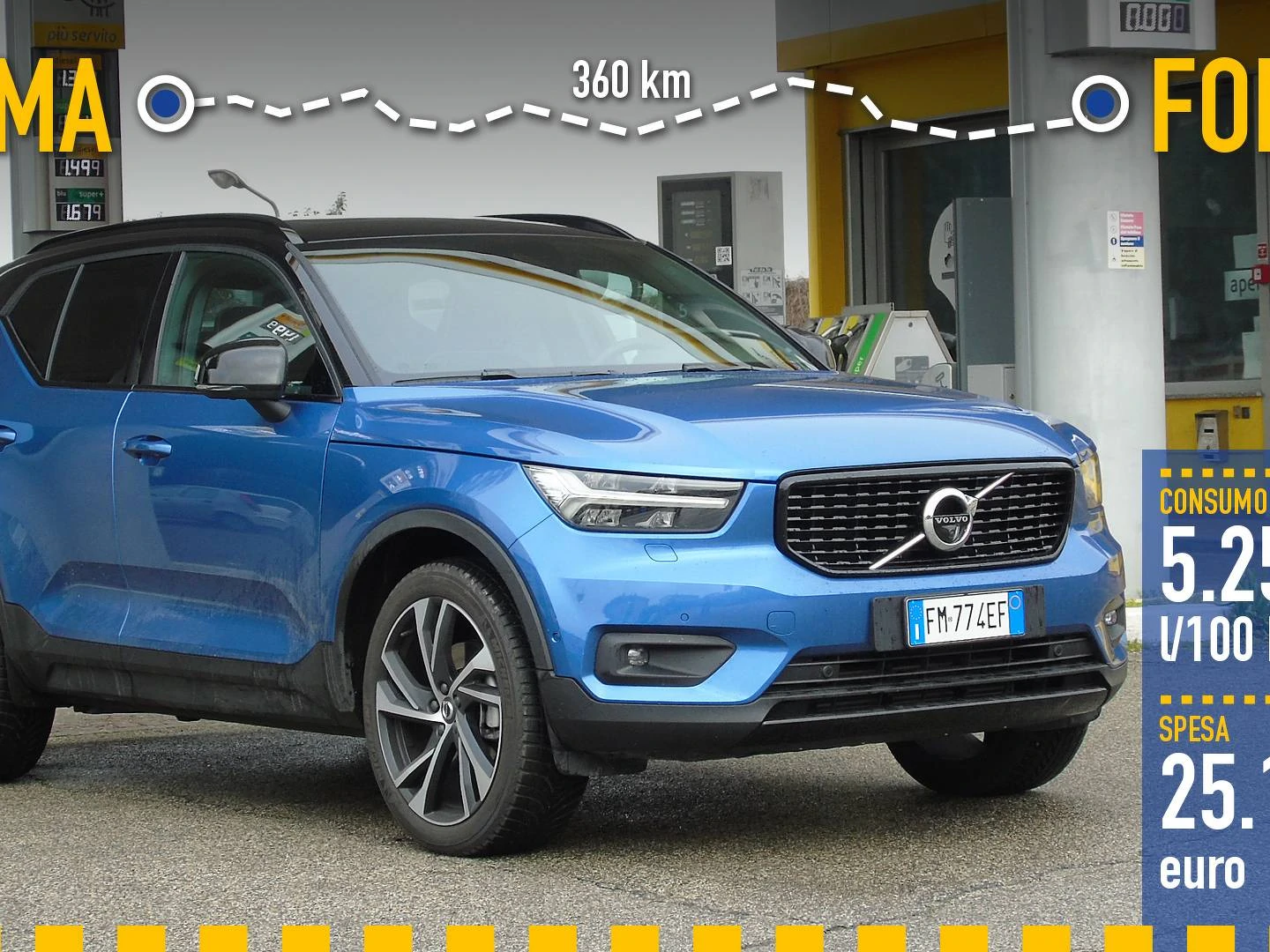
DAF passenger cars - Dutch development
We associate the Dutch brand DAF with all kinds of trucks, which are among the most popular, especially in the tractor segment, but the company also had an episode with the production of cars. Here is a brief history of DAF passenger cars.
Although the history of the brand dates back to the 1949s, the production of DAF trucks began in 30, when two trucks were introduced: the A50 and A600, with the engine located under the cab. The following year, a new plant was opened, which allowed a significant increase in production. Dutch engineers also began to develop designs for the army. During the years the company prospered so well that it was decided to start a new chapter in history - the production of a passenger car. Nine years after the premiere of the first trucks, DAF was introduced. It was the only passenger car that was then produced in the Netherlands.
DAF 600 it had tiny 12 meter long 3,6-inch wheels, but for this segment it had a fairly large trunk. Rear seat access was easy thanks to large doors and folding front seat backs. The design of the car can be called modern and ergonomic.
For the drive, a small two-cylinder air-cooled engine with a volume of 590 cm3 and a power of 22 hp was used. received after 90 seconds. The most important innovation was the Variomatic gearbox developed by DAF co-founder Hub Van Doorn.
Today we know this solution as a stepless variator. The DAF design was based on two V-belt pulleys that transferred power from the engine to the wheels. Because DAFs had no gears, they could move forward and backward at the same speed. Starting with the DAF 600, Variomatic gearboxes have become the manufacturer's flagship passenger car.
Through the trade press DAF 600 was warmly received. Ride comfort, ease of handling and thoughtful design were especially praised, although the fact is that the Variomatic was not ideal. V-belts did not guarantee a long service life. DAF assures that the lanes in the system should be enough to cover at least 40. km without replacement. The journalists did not complain about the power unit, but noted that the performance is not satisfactory.
The car remained on sale until 1963. In addition to the two-door sedan, a universal version (pickup) was also produced. During this time, 30 copies of this baby were produced. In the meantime, a slightly more powerful version was launched into production, which actually became the successor to the 563th.
DAF 750 (1961–1963) had a larger engine of the same type, which, thanks to the increase in displacement, produced 8 hp. more, which led to improved performance: the maximum speed increased to 105 km / h. Along with the 750, another model was introduced, the 30 Daffodil, which did not differ in driving performance from it, but was a more luxurious version. A chrome grille trim was chosen at that time. It was the most expensive model in the DAF line, which offered three twin cars in the early XNUMXs.
The chaos in the proposal was interrupted in 1963 when it was opened. DAF Narcissus 31when production of other models is discontinued. The new car had larger wheels (13 inches), the carburetor was changed in the engine, but this did not increase power, but improved efficiency. For the first time, DAF presented a new version of the body for this model. It was a station wagon, reminiscent of the famous '56 Bosto Mermaid. The luggage superstructure extended beyond the roof line and was fully or partially glazed. A total of 200 31 units of all Daffodil DAF vehicles were produced.
The next modernization took place in 1965, and with it the name was changed to DAF Daffodil 32. There were no major changes in terms of design, but the body was restyled, which is especially noticeable from the front. It was then that the first DAF with a sporty flavor was created - Daffodil 32 S. By increasing the engine size (up to 762 cm3), replacing the carburetor and air filter, engine power increased to 36 hp. The car was made in the amount of 500 copies for homologation purposes, so that DAF could participate in the rally. The standard version of the Model 32 sold 53 copies.
A photo. DAF 33 Kombi, Niels de Witt, flickr. Creative Commons
The family of small cars DAF has replenished the model 33, produced in 1967-1974. Once again, there was no major modernization. The car was better equipped and had a 32 hp engine, which allowed it to reach a speed of 112 km / h. DAF 33 turned out to be the greatest success - 131 cars were produced.
The production of passenger cars was so profitable that DAF decided to build a new plant, taking advantage of the economic situation in the country. Following the closure of a mine in the province of Limburg, the Dutch government wanted to subsidize investment in the area to combat unemployment. The owners of the company took advantage of this and began construction of the plant in Born, which was completed in 1967. Then the production of a new car, the DAF 44, began there.
After the premiere DAF Narcissus 32Italian stylist Giovanni Michelotti took part in the restyling, and work began on a larger passenger car. This time, the designer could afford to create a completely new body, thanks to which DAF 44 it looked modern and aesthetically pleasing for the mid-sixties. It also proved successful in sales. Production began in 1966 and continued until 1974. During this time, as many as 167 units were produced.
Phot. Peter Rolthoff, flickr.com, licensed. Creative Community 2.0
DAF 44 it was still a two-door sedan, but slightly larger, measuring 3,88 meters. The drive used was an upgraded engine from the smaller DAF family. 34 HP was achieved by increasing the working volume to 844 cm3. Power was sent through the continuously variable Variomatic transmission all the time. In addition to the sedan, a station wagon was also introduced, which this time was designed with more refinement. On the basis of the model, a special Kalmar KVD 440 vehicle was built, designed for the Swedish post. The car was made in Sweden by another company, but it was built from the entire DAF 44 transmission.
Phot. Peter Rolthoff, flickr.com, licensed. Creative Community 2.0
It went into production in 1974. DAF 46which did not differ in bodywork from its predecessor. Stylistic details have been slightly changed, but the most important upgrade was the use of a new generation Variomatic transmission with a De-Dion drive axle. This type of solution provided more comfort when driving on uneven surfaces and was used in more expensive vehicles at the time, such as the Opel Diplomat. Despite the improvement, the production of this model was not great. By 1976, 32 units had been produced.
The top of the DAF passenger car segment was the model 55, which began production in 1968. This time the Dutch abandoned their small air-cooled engines in favor of a liquid-cooled engine. Instead of a two-cylinder engine, DAF 55 received a 1,1-liter four-cylinder Renault engine with less than 50 hp. A much more powerful engine provided good performance (136 km / h, acceleration to 80 km / h in 12 seconds), because the car did not put on too much weight compared to its smaller brothers - it weighed 785 kg.
This was DAF's first attempt at a Variomatic with such a powerful unit. This was an engineering problem, as the drive belts were doomed to a much higher load than in the case of power transmission from two-cylinder engines. The use of stronger belts affected the efficiency of the entire system.
A photo. DAF 55 Coupe Nico Quatrevingtsix, flickr.com, licence. Creative Community 2.0
Initially, the car was offered as a two-door sedan, like all previous cars of the brand. A novelty was the coupe model presented in the same year, which was distinguished by an extremely attractive design. A sharper sloping roofline added aggressiveness. It is not surprising that buyers willingly chose this option, because DAF did not offer a four-door sedan anyway.
It was also an interesting project. DAF Torpedo - a prototype sports car with a bold wedge-shaped design. The car was built on the basis of the DAF 55 Coupe - it had a 1,1 liter engine and a Variomatic gearbox. The car was made in just one copy, it was presented at the Geneva Fair in 1968.
At the end of production, a special edition called 55 marathons (1971-1972). The most important change was the 63 hp engine. with the same displacement as the standard version. This version also improved the suspension, brakes and added stripes to the body. The car in this version could accelerate to 145 km / h. 10 were produced.
The Marathon version is back in the successor it was DAF 66which was produced in 1972-1976. The car was identical to its predecessor and featured the same 1,1-litre engine, but with an additional 3 hp available. (engine was 53 hp). The Marathon version was originally equipped with a 60 hp engine, and later a new 1,3-liter engine, also made by Renault, was installed.
On the basis of the model 66, a military truck DAF 66 YA (1974) with an open body (with a canvas roof) was prepared. The car had a drive system and front belt identical to the civilian model. The rest were adapted for military needs. The machine was used until the nineties.
Production of the DAF 66 continued until 1975 and 101 units were produced in sedan, coupe and station wagon versions.
Interestingly, after the warm reception of the first small cars of the brand, their reputation began to decline over time. The main reason was the adaptation of the brand's cars to a maximum speed of 25 km/h. This was due to Dutch law which allowed people to drive this type of vehicle without a permit. DAFs converted in this way were a hindrance, which automatically affected the brand image. Starts in rallycross, Formula 3 and the marathon were supposed to change the image, but DAF cars were chosen by sedate drivers, often of the older generation.
The DAF problem was also a small model range and the decision to make all cars available only with the Variomatic gearbox, which, despite its undeniable advantages, had a long list of problems - it was not suitable for mounting with powerful engines, the belts could break, and besides , some drivers preferred the classic manual transmission.
A photo. DAF 66 YA, Dennis Elzinga, flickr.com, lic. Creative Commons
In 1972, DAF entered into an agreement with Volvo, which acquired 1/3 of the shares in the plant in Born. Three years later, the plant was completely taken over by Volvo. Production of the DAF 66 was not completed - it continued until 1981. From this year on, the Volvo logo appeared on the radiator grilles, but it was the same car. Both the Renault powertrains and the Variomatic gearbox have been retained.
Volvo also used a prototype that had not yet entered production. DAF 77which, after numerous revisions, went on sale as the Volvo 343. Production began in 1976 and continued until 1991. The car turned out to be a bestseller - 1,14 million units were produced. Initially, the car was offered with a variomisk, the name of which was changed to a CVT gearbox. According to the DAF designers, the transmission did not cope well with this much heavier vehicle. Already in 1979, Volvo introduced a manual transmission in its offer.
Thus ended the history of DAF passenger cars, and there is no sign that this successful truck manufacturer will ever revive this side project. It's a pity, because history has shown that they were looking for their niche in the market in an interesting way.
